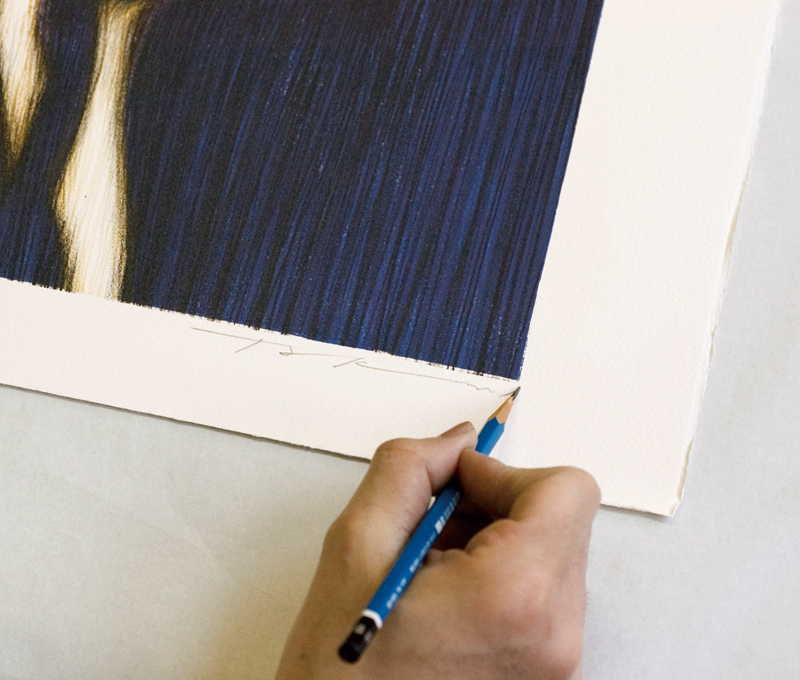Original Print
オリジナル版画
Original Hanga
CATEGORIES
An original print is a print work produced with the clear intention of the artist, and is one which was completed with the direct involvement of the artist in the making process.
Several conditions apply to qualify as an original print. They are: (1) the artist must personally draw the sketches and create the image on the plate; (2) the printing must be done by the artist personally or by a printer under the artist’s direction; (3) the artist must approve the work; and (4) the artist must sign the completed work and number it with the edition number. Only when all of these four conditions are met, will a piece of work be recognized as an original print.
In addition to original prints, there are also prints that are referred to by the term “estampe”. Estampe is a French word which stands for the print itself, but is mostly used today as a word to designate a reproductive print. Reproductive prints are works that are based on original pieces of watercolor and oil paintings, sketches, etc. which were not produced for printing. These are made into prints by carving woodblocks and copper plates, or by making lithographs and screen prints via a photomechanical process, and are then signed by the artist or by the parties concerned. Because many estampes and reproductive prints with no signs or editions were circulated after the war, a concrete definition of the term “original prints” was announced at the Third International Congress of Plastic Arts held in Vienna in 1960 to make the distinction between original and reproductive prints clear. This became the basis for the conditions that apply today. In present-day Japan too, the Contemporary Graphic Art Dealers Association of Japan defines conditions for original prints in similar words to the list above.
When producing print work, the finished product must always be signed and numbered with the edition. It is also best to manage the limited number of copies to be produced and the production data. By managing the number of copies, the production of duplicate editions can be avoided, and by managing the data, it can be printed again within the limits of the number of copies personally specified. When doing so, prints produced must be of the same quality as those produced earlier.

